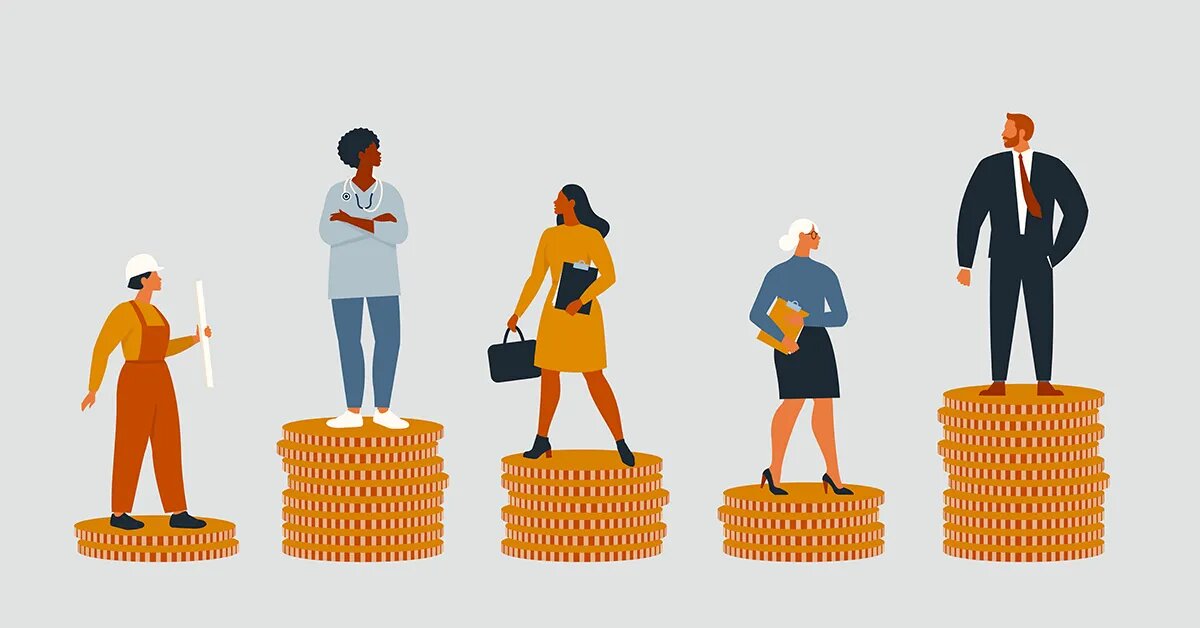What is wage disparity?
Wage disparity occurs when employees doing the same or similar work receive different wages for reasons not related to objective factors, such as their experience, skills, working conditions, or qualifications.
For example, a group of IT specialists perform similar activities in similar working conditions. After considering tenure, experience, or other legitimate reasons, they might be getting different wages, but there is still a statistically significant difference in the wages the women and the men receive. In this case, we have gender-based wage disparity.
Wage gap vs. wage disparity
A wage gap is a measure of the differences in compensation between two populations, such as different ethnicities or racial groups within a population. The unadjusted wage gap compares the average compensation between racial groups or genders without accounting for education, tenure, skill, and other neutral factors.
Wage disparity is one of the factors that contribute to unadjusted wage gaps. Another factor is that workers don’t have equitable opportunities for promotion. For example, an organization could achieve gender wage equity for people in the same or similar roles, but there could still be an overall gender wage gap across the organization because the number of men in better-paying positions is higher. This, in turn, could be due to unfair recruitment practices or inequitable retention or promotions.
Enduring inequity in 2024
In 2024, men still earn 16% more than women on average. In rural areas, women of color are among the lowest-paid employees. Hispanic and black women make 56 cents for every dollar white men make in rural areas. Overall, women earn 84 cents per dollar men make.
How payroll transparency benefits employees
Payroll transparency can highlight disparities between employees of different races, ethnicities, or genders, prompting organizations to address and correct unjustified differences. The best payroll solutions offer a range of benefits, starting from how to calculate hourly pay to revealing disparities based on race, ethnicity, origin, etc. Ultimately, this can lead to more equitable pay practices.
Empowering employees
Employees with knowledge of their peers’ salaries are better equipped to negotiate fair wages for themselves. Payroll transparency helps employees make informed decisions about job changes, promotions, and career paths, potentially reducing wage disparities over the long term.
Promoting fairness
When salaries are transparent, there is often a move toward standardizing pay for similar roles and qualifications, reducing arbitrary or discriminatory pay differences. Organizations can set clear criteria for compensation tied to performance, ensuring that pay differences are based on objective factors rather than biases.
Increasing company accountability
Companies that adopt payroll transparency may face public scrutiny if disparities are found, pushing them to address wage gaps proactively. Management and HR departments are held accountable for ensuring equitable pay practices, which fosters a culture of fairness and inclusivity.
Challenges and potential downsides
Some employees may feel uncomfortable with their salaries being disclosed, leading to privacy issues.
Transparency can lead to resentment or conflict if employees perceive disparities as unfair, even if there are legitimate reasons for differences in pay.
Implementing and maintaining a transparent payroll system can be administratively challenging and resource-intensive.
Payroll transparency is improving in 2024
Despite some challenges, payroll transparency is improving. 99% of marketing, creative, and technology specialists say they’re more likely to apply for jobs to organizations that list salaries or salary ranges in their ads.
As of 2024, 70% of companies include salary range information in job listings, and 60% share this information with their current employees. These numbers almost doubled in 2023, and the tendency is not expected to slow down in 2024. Statistics show that payroll transparency rates in the US are higher than the global average.




